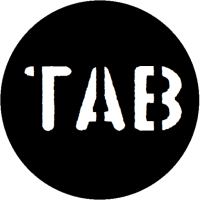One I just found enough information for after seeing it six months ago, the Winchester-Pugsley Anti-Tank Rifle, patented in 1919. It uses a 1911 pistol grip for both the trigger assembly and the bolt; rotating the pistol grip counter-clockwise and pulling back is how the bolt is drawn back. A 10-round box magazine feeds .50 BMG into the rifle, and the grip is pushed forward and rotated back down to lock the bolt. As Ian mentions, the only known survivor is cracked through the receiver, and I only have information on the barrel length and total length, so the weight is probably not accurate (according to the Cody Museum, it's "stupid heavy").
Winchester-Pugsley Anti-Tank Rifle (12.7x99mm)
Wt 19.76 kg, BA, Dam 8, Pen 2-3-4, Blk 11, Mag 10, Rcl 5, Rng 186
While it wouldn't be much today, it would be effective against most WW1 tanks at some range. Beutepanzer were more common than A7V, and the Mk IV was 2/1/1 for HF/HS/HR and the Mk V 3/2/2. The A7V would be immune to frontal shots, but the 5/2/3 armor would be vulnerable to flank shots.
Winchester-Pugsley Anti-Tank Rifle (12.7x99mm)
Wt 19.76 kg, BA, Dam 8, Pen 2-3-4, Blk 11, Mag 10, Rcl 5, Rng 186
While it wouldn't be much today, it would be effective against most WW1 tanks at some range. Beutepanzer were more common than A7V, and the Mk IV was 2/1/1 for HF/HS/HR and the Mk V 3/2/2. The A7V would be immune to frontal shots, but the 5/2/3 armor would be vulnerable to flank shots.







Comment